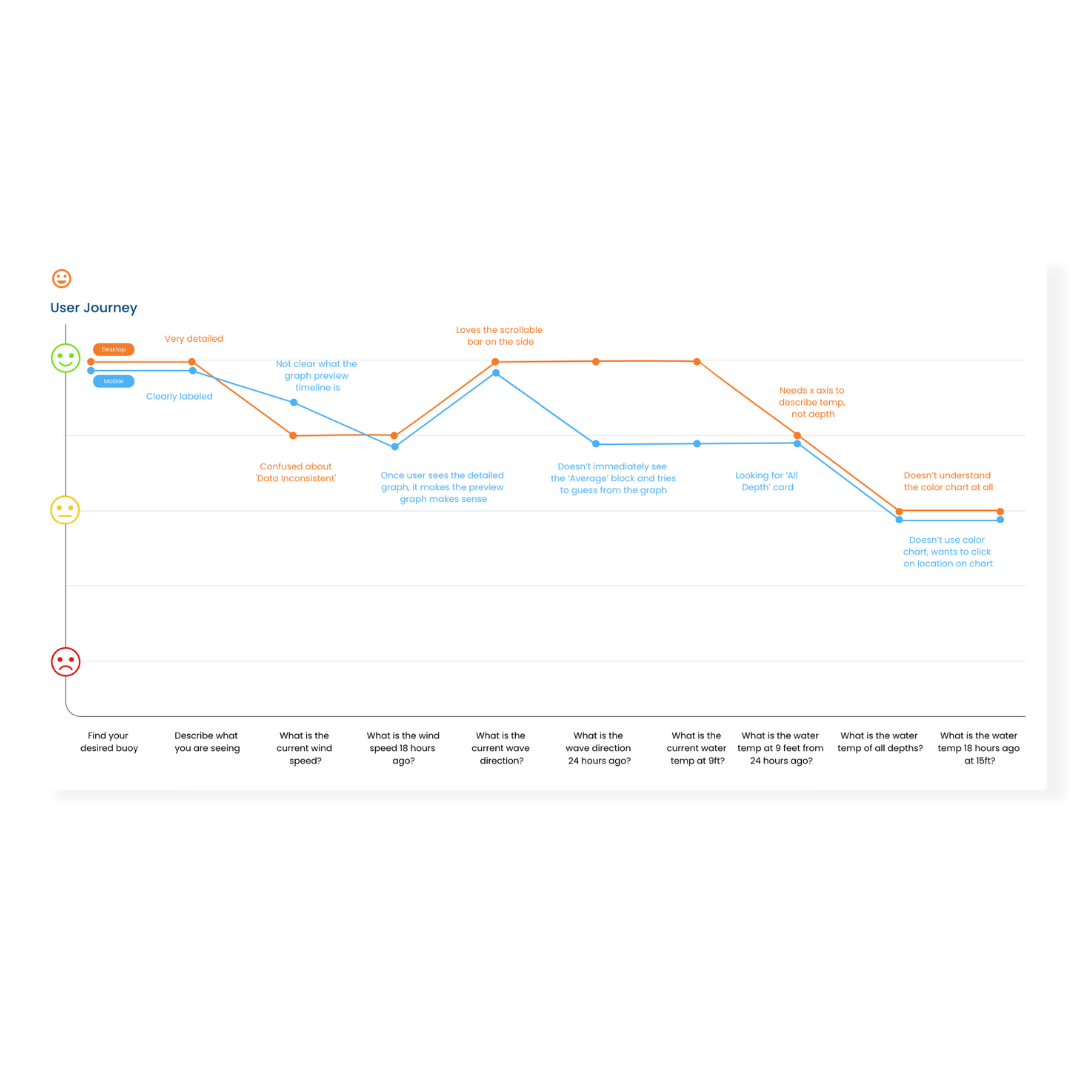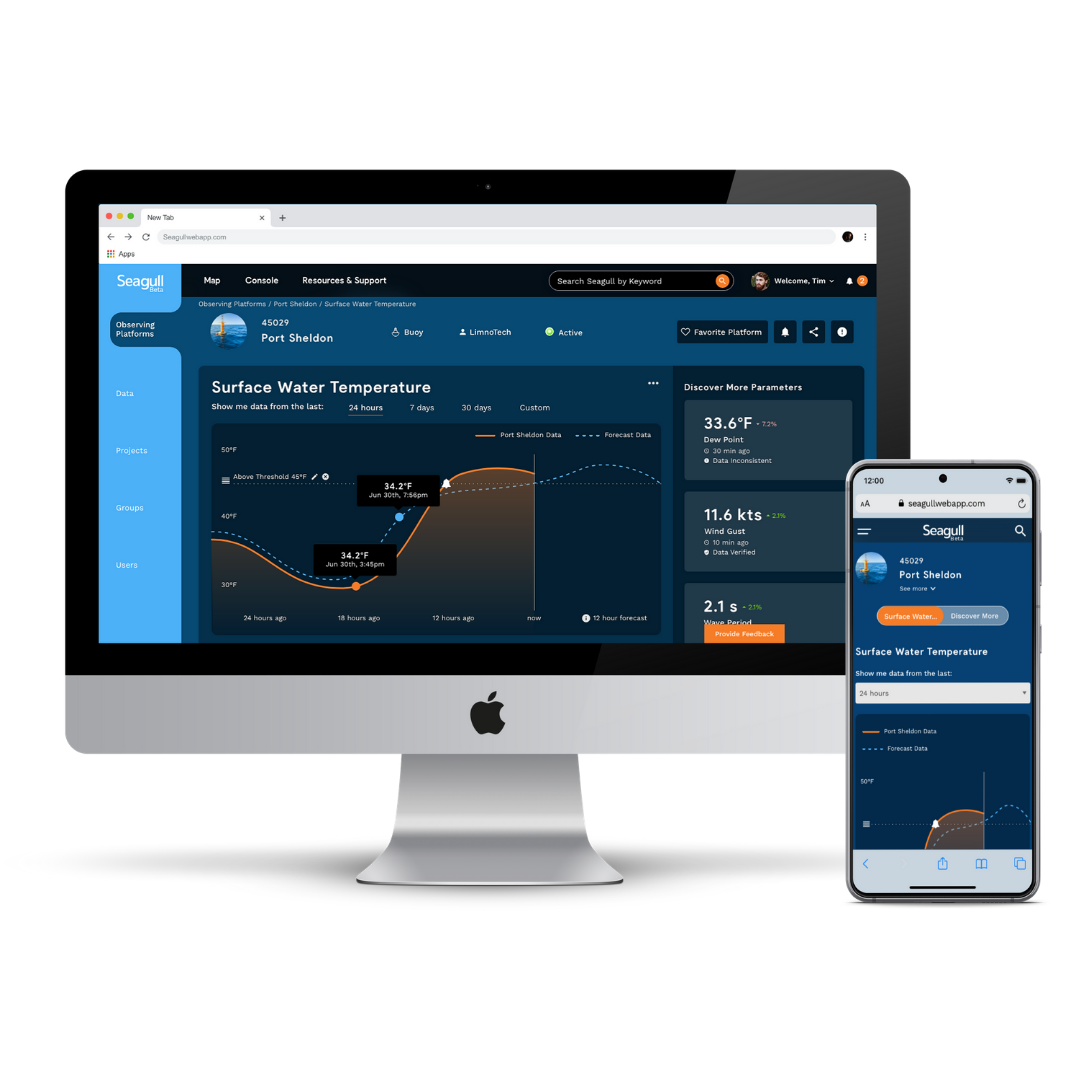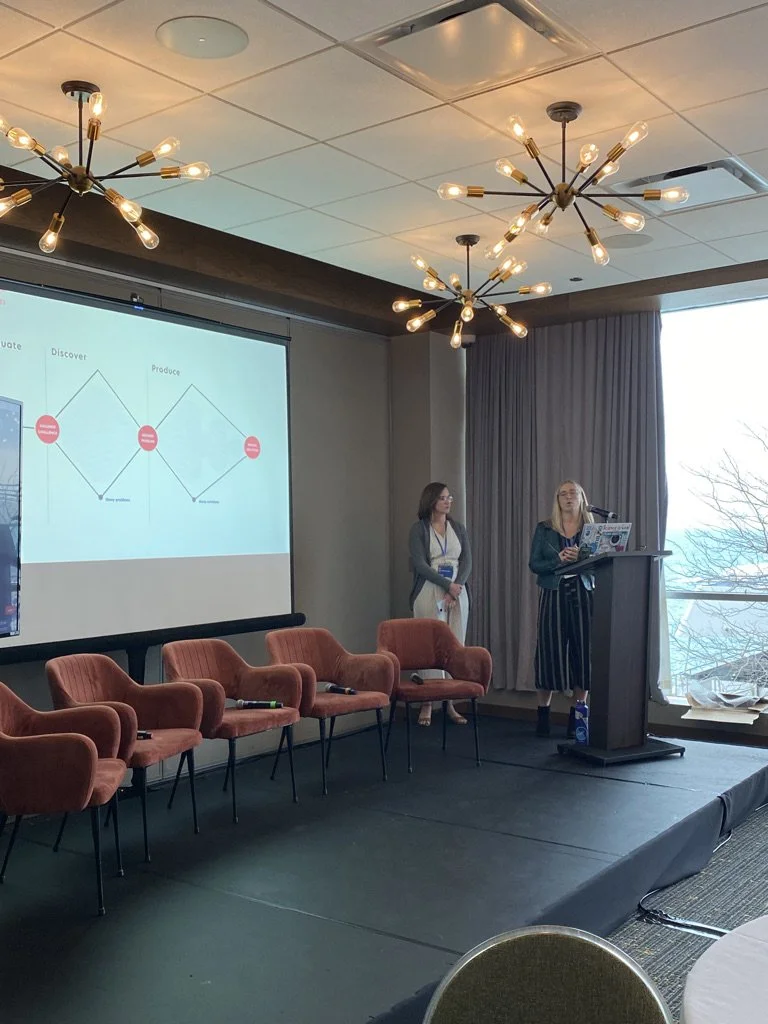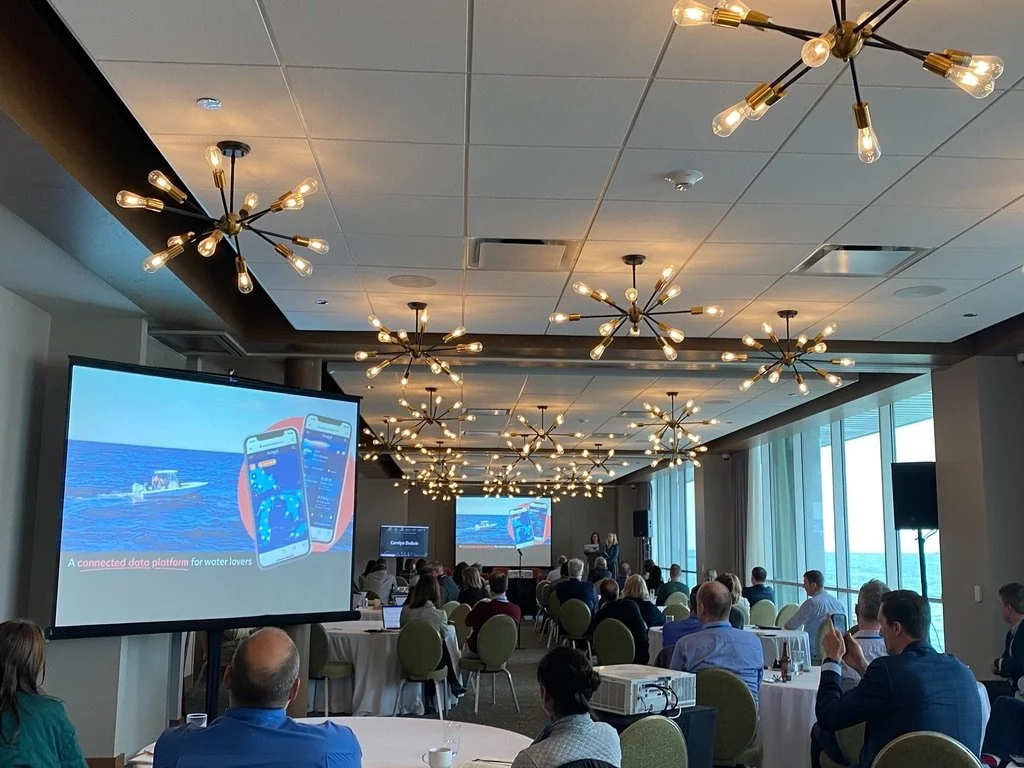Seagull Web AppThis international award-winning 🥇 web app started when a family of data-collecting organizations throughout the Great Lakes struggled with the lack of a centralized database. Since Seagull took flight, it is used by scientists 🧑🏻🔬, meteorologists, researchers, and even casual fishermen 🐟 and kayakers.
-
How might we create an innovative database for water scientists and Great Lakes users that pulls data from real-time platform reporting, forecasted model data, and archival data.
-
Since this was uncharted water (pun intended), our MVP goals were simply to capture early adapters such as scientists and researchers. From there, the client would seek federal grants to further build and connect Seagull to global databases.
Additionally, our experience goal was to keep the UI simple. Gathering momentum happens when a variety of users can learn the system and recognize its value immediately.
-
I was the Lead UX & UI Designer throughout the entire project. When the VP of Experience went on leave, I absorbed her responsibilities of leading the product vision and roadmap. I worked in tandem with project managers, a team of full-stack developers, and client stakeholders.
Discover & Define
With a lot of exciting and competing ideas, we needed to gather focus quickly to ensure we built the right thing. Dozens of hours in workshops to learn the water data world and its challenges, and dozens more hours prioritizing those challenges into an MVP strategy.
Workshops • User Interviews • Personas • User Flows • Product Roadmap
Understanding the existing product, ERDDAP, and its shortcomings was imperative as we learned how to get in the minds of water scientists. ERDDAP had extremely powerful data processing APIs, but the information architecture was a nightmare. The good news was that we could take what ERDDAP had already solved for and enhance off of that.
Design & Deliver
With validated goals and personas, it was time to put pen to paper—er, pixels to screens. A functioning prototype that felt like the real thing was created so it could be tested with real users. Special attention was paid to the micro interactions with the map and the data visualizations.
Wireframe • Prototype • Usability Testing • Design System
The aggregated data from a series of unmoderated usability tests where users were asked to perform tasks in the prototype. Users had difficulty understanding data visualizations on mobile, so we adjusted the designs accordingly.
I had the immense privilege to speak on the impact of Seagull at GLOS’ Annual Meeting in April 2022 in Chicago.
Final Impact
Since its launch in April 2022, Seagull has soared high. It is bringing together organizations who have never been able to collaborate due to lack of data access. It has catapulted the digital transformation of the industry and invigorated new research. Seagull has even caught the eye of federal grants for preservation efforts. International organizations are paying attention and hoping to collaborate with the new technologies being championed by the Great Lakes and Seagull.
Bonus!
Here’s an infographic to better explain all the complexities and capabilities behind Seagull.

















